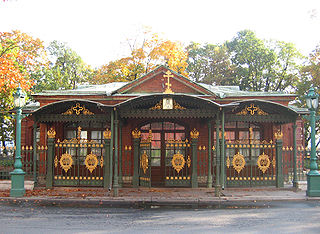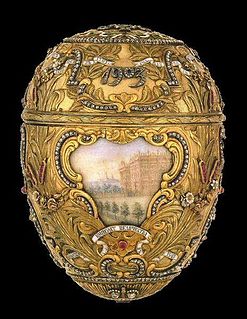 W
WPeter the Great, Peter I or Pyotr Alekseevich ruled the Tsardom of Russia and later the Russian Empire from 7 May [O.S. 27 April] 1682 until his death in 1725, jointly ruling before 1696 with his elder half-brother, Ivan V.
 W
WThe All-Joking, All-Drunken Synod of Fools and Jesters was a club founded by Peter I of Russia. The group included many of Peter's closest friends, and its activities centered mostly around drinking and partying. The group was not without controversies; some of its parodies against the Church in particular were heavily criticized.
 W
WIvan Aleksandrovich Balakirev was a court jester of to Peter I of Russia.
 W
WA batog is a rod or stick about the thickness of a man's finger traditionally used for corporal punishment in Russia. The condemned was stretched on the floor face down with his back exposed while two men sat on him, one holding down the arms the other on the legs. The two men would then begin beating the victim across the back, replacing their batogs if they broke, until ordered to stop. The punishment was not usually fatal. Peter the Great used this form of punishment, along with much harsher measures such as the breaking wheel, during the Streltsy Uprising in 1698.
 W
WThe Botik of Peter the Great is a miniaturized scaled-down warship discovered by Peter the Great at the Royal Izmaylovo Estate in 1688. It was restored by Karshten Brandt, and Peter learned to sail using the boat on waters near Moscow. It was stored in the Kremlin of Moscow by Peter and later enshrined in St. Petersburg. Peter continued to use it in state ceremonies and ordered that the boat be sailed down the Neva River on 30 August of every year. It was used in state ceremonies of later Russian monarchs, including the wedding of Catherine the Great and Peter III of Russia, as well as the centennial celebration of St. Petersburg. Catherine built a boathouse in the 1760s to store it.
 W
WThe cabin of Peter the Great is a small wooden house which was the first St Petersburg "palace" of Tsar Peter the Great.
 W
WThe Church Reform of Peter I introduced what some believe was a period of Caesaropapism in the history of the Russian Orthodox Church, when the church apparatus effectively became a department of state.
 W
WThe Czar Peter House is a historical building in Zaandam, the Netherlands. It is best known as the place where Tsar Peter I of Russia resided in 1697 during his Grand Embassy. The building was constructed in 1632.
 W
WExecutions of Cossacks in Lebedin, in 1708–1709 was a large-scale execution of Ukrainian Cossacks suspected of having sided with Hetman Ivan Mazepa after his break with Tsar Peter I during the Great Northern War. Cossack officials summoned to the Council of Hlukhiv who did not report to it were arrested, tortured and executed for treason. The exact number of victims is not known, but the minutes of the historical accounts indicate at least 900.
 W
WCount Gavrila (Gavriil) Ivanovich Golovkin was a Russian statesman who formally presided over foreign affairs of the Russian Empire from 1706 until his death. The real control over Russian diplomacy during his lengthy term in office was exercised by Boris Kurakin until 1727 and by Andrey Osterman after his death.
 W
WThe Grand Embassy was a Russian diplomatic mission to Western Europe from March 9, 1697 to August 25, 1698 led by Peter the Great.
 W
WMary Hamilton, or Maria Danilovna Gamentova, was the lady-in-waiting of Empress Catherine I of Russia and a royal mistress of Tsar Peter the Great of Russia. She was executed for abortion, infanticide, and theft and slander of Empress Catherine. She is pointed out as one of the possible inspirations for the song Mary Hamilton.
 W
WThe Peter the Great egg is a jewelled Easter egg made under the supervision of the Russian jeweler Peter Carl Fabergé in 1903 for the last Tsar of Russia, Nicholas II. Tsar Nicholas presented the egg to his wife, the Czarina Alexandra Fyodorovna. The egg is currently located at the Virginia Museum of Fine Arts in Richmond, Virginia, in the United States.
 W
WThe toy army of Peter I was initially called Petrovskiy polk, Peter's regiment and was a collection of young Peter's playmates, noblemen's sons and attendants of his father Aleksei's court.
 W
WYakov Fyodorovich Turgenev was a court jester to Peter I of Russia, and a Kiev colonel.
 W
WAndrew Vinius (1641–1717) was a Russian statesman and a friend of Peter the Great. He was a member of Peter's close-knit group of friends who organized themselves into the Jolly Company and The All-Joking, All-Drunken Synod of Fools and Jesters.
 W
WCount Nikita Moiseevich Zotov was a childhood tutor and lifelong friend of Russian Tsar Peter the Great. Historians disagree on the quality of Zotov's tutoring. Robert K. Massie, for example, praises his efforts, but Lindsey Hughes criticizes the education that he gave to the future tsar.